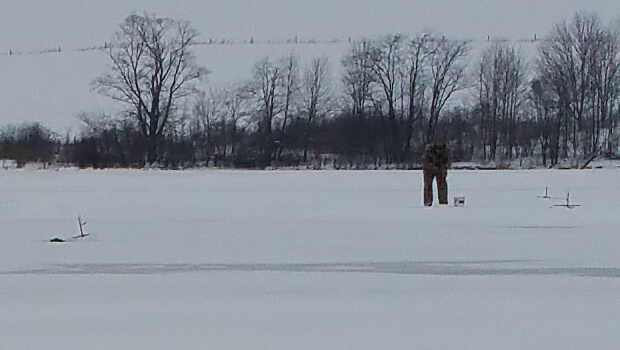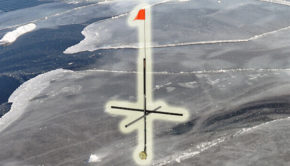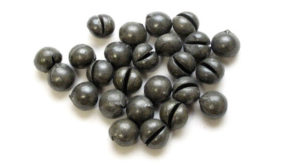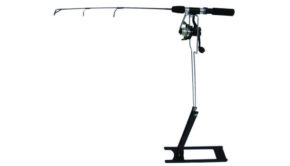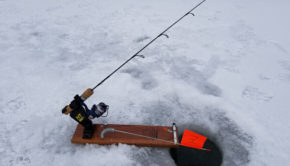How to rig a tip up
Tip ups are one of the most useful pieces of ice fishing equipment available. You can set them like traps and wait for fish to take the bait. This allows you to put a lot of bait out instead of simply fishing a single pole.
Ice fishing reviews is reader supported. When you buy things through links on this site, I may earn a commission. Thank you!
Whether you have a very cheap tip up like the Celsius ITU or a more expensive model like the Frabill Pro Thermal Round Tip-Up, the rigging is pretty much the same.
What you need
All you need is a tip up, some tip up line, some regular fishing line, a swivel, a sinker, a hook and your bait. Most people use live or dead minnows with tip ups where regulations allow, though you can also use other bait like wax worms on a tip up if you want to.
First you tie one end of your tip up line to the spool on your tip up with an arbor knot. Then you wind on enough of the line to fill the spool. From there you can go one of two ways.
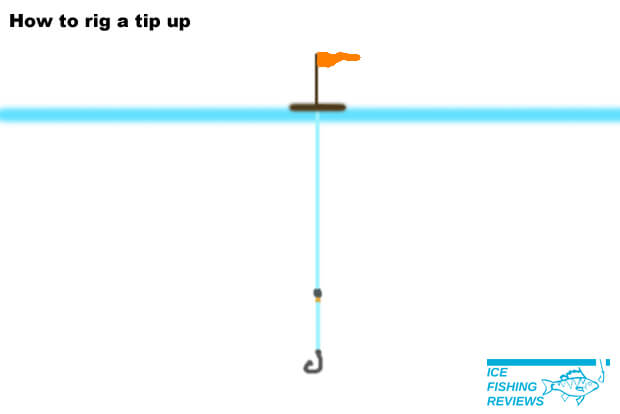
If you want to use a big sliding sinker you put it on the tip up line, then tie the end of that line to a swivel. If you want to use smaller split shot sinkers instead, you just tie the tip up line to a swivel and worry about the sinkers later.
On the other end of the swivel you tie a leader of two to four feet of regular fishing line. At the end of that you tie your hook. Any kind of hook can be used, but where regulations allow most people use treble hooks with their tip ups. The glow resin treble hooks by VMC are the best for this since they glow in the dark water under the ice and help draw in fish from far away.
Most people rig their tips at home before they arrive on the ice. This is a lot easier than trying to tie a lot of knots while standing out in the cold.
Ice fishing with a tip up
When your hole is drilled through the ice, you bait up your tip up hook and drop it down into the water. Then you unwind line off the spool under you have reached your desired depth. If you don’t know where the fish are, it is best to stagger your tip ups so that some are deep and others are closer to the surface. Using a flasher is the best way to see how deep your bait is going, but if you don’t have one you can just measure the amount of line you are pulling off the spool.
Once your bait is at the desired depth, you set the flag on the tip up. Every tip up is different, but usually this involves pushing a small piece of metal over near the spool that so that it will be tripped if a fish takes out line. After that you just place the tip up over the hole and wait.
Depending on the kind of fishing you are doing, you may want to let your tip ups sit for a long time. In other instances you’ll want to check your tip ups more frequently. As a general rule, I usually check my tip ups every hour or so if I am not getting any bites. Often that in itself is enough to bring in fish. You’d be surprised how many times you’ll catch a fish on a tip up just a minute or two after you get it set, even if the same hole hasn’t produced any fish previously.

